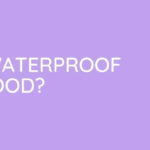Most people often get confused with these three terms. Especially beginners who are mainly learning by themselves what are these find it more difficulties. These people are always called as DIYers (Do It Yourself). Let’s compare Concrete VS Mortar VS Cement for their use, composition, properties, and setting.
Contents
Concrete VS Mortar VS Cement: Comparison Chart
| CONCRETE | MORTAR | CEMENT |
|---|---|---|
| It is used as a binding agent. | It is used as a building material. | It is used as a glue. |
| Made up of limestone, bauxite, chalk, sand, and iron ore. | It is a compound of sand along with gravel with cement. | It consists of fine sand and cement. |
| It is solidified when it is mixed with water and it sets into the shape of the container. | It is relatively more flexible and it can be moulded into different forms before hardening occurs. | It appears like a thick paste that is put between bricks and stones. It will bind up the building units together as it hardens. |
Concrete Vs Mortar Vs Cement: Overview
What Is Concrete?
Concrete is a very strong structural building material that comprises cement, sand, and larger gravel. Concrete is a complete building material that is being used for foundation walls, concrete slabs, patios, and many other masonry structures. It is uniquely adaptable because it starts as a simple, dry mixture, then becomes flexible. It is a semi-liquid material capable of forming into any mold or shape. And which is being dried into the hard-as-rock material, we know as concrete. In many concrete structures, metal reinforcement, such as wire mesh or rebar, is being added for strength to minimize the cracking, which occurs in solid concrete.
What Is Mortar?
- A no-mix, no-mess alternative to traditional thin-set mortars spreads quickly and easily.
- Recommended to bond porcelain, stone, marble, granite and ceramic or porcelain tile up to 8" x 8".
- Can be used with tile with one side up to 15", but dry time significantly increases.
Mortar is another type of building material that is composed of cement. In this case, it is mixed with fine sands and water along with lime added to improvise the durability of the product. When water is added to this mix, it activates the cement so that it hardens or cures, as with concrete. Mortar is not as strong as concrete, and in typical, it is not used as a sole building material. Instead, is it the “glue” that holds the bricks together, a block of concrete, stone, and other masonry materials. You can check how mortar is better than others.
What Is Cement?
- This product is a hardware sealers
- Used for hardware, glue
- The product is manufactured in United States
Cement is used as the binding element in both concrete and mortar. It is in common made up of limestone, clay, shells, and silica sand, with limestone being the most needed ingredient. These materials are being crushed and combined with other ingredients. Then they are heated to about 2,700 F. This material, which is being called clinker, is being grounded into a fine powder and packaged. It is used for mixing various cement building materials, which includes mortar and concrete.
Concrete Vs Mortar Vs Cement: Composition
Composition Of Concrete
Concrete is comprised of cement, sand, and gravel, or any other fine and coarse gravel. The water which is being added activates the cement. It is the element responsible for binding the mix together to form a solid.
Composition Of Mortar
Mortar is comprised of cement, fine sands, and lime. It is used to bind material when building with brick, block, and stone.
Composition Of Cement
Cement is a fine binding powder which is never being used alone. It is a component of both concrete and mortar. As well as stucco, tile grout, and thin-set adhesive.
Concrete Vs Mortar Vs Cement: Where It Is Used?
Where Can Concrete Be Used?
You can buy ready-made concrete mixes in bags that combine cement, sand, and gravel. So that all you need is to add water. These are used for small projects. They are anchoring fence posts or building small pads. For large projects, you can either buy bags of cement and can mix them with sand and gravel yourself by using a wheelbarrow or other large container. Or you can order already mixed concrete delivered by a truck.
Where Is Mortar Used?
Due to its low strength, the mortar could not be used alone. It is being used as a gum to bind masonry units such as bricks and stones together. While constructing walls. For floors, it is used to fix tiles. Before laying tiles, a layer of mortar must be applied on the floor. It is used to repair walls that have gaps between the bricks. Mortar can be prepared for filling the gaps, which strengthens the wall.
Where Is Cement Used?
It is being used as an ingredient for concrete and mortar. It is being worked as a glue which is holding the sand and aggregate together in concrete. The cement slurry is being used to fill the cracks present in concrete structures. It is used in making lamp posts, railway sleepers, cement pipes, and telephone poles. Cement by itself cannot be used, like concrete.
Concrete Vs Mortar Vs Cement: Production
Production Of Concrete:
Concrete is being manufactured at a concrete ready-mix plant. First, it aggregates like pebbles or crushed stone, which are being coated with cement paste in a continuous mixer. If fibers are needed, they can be added now using various methods like hand-mixing or impregnating. The concrete is then being transported using a mixer-truck to the site.
Production Of Mortar:
Mortar, in general, is being prepared by on-site workers by themselves. It is being done by mixing dry Portland cement with lime, and then water is added. It is because mortar, once made, starts to cure in a concise time.
Lime mortar, on the other hand, is being produced by heating the limestone in a kiln to get quicklime. This quicklime is then being mixed with water to produce slaked lime. Slaked lime, or in the form of a paste called lime putty, or hydrated lime powder, is in the final is being mixed with sand and water to form the mortar.
Production Of Cement:
Cement is being manufactured using two steps. First, all the ingredients like calcium oxide, iron oxide, alumina oxide, and silica oxide are obtained in huge quantities. They are then being crushed to a homogenous size and are being heated in a rotary kiln at a temperature of 2,000°C. The products which are being obtained in this step are big grains called clinkers. Some of the additional ingredients like gypsum and fly ash are being added to this. It is then crushed in a cement grinding mill to get cement in a fine grey, powdery form.
Concrete Vs Mortar Vs Cement: Setting
Curing or Setting of Concrete:
When concrete is being mixed with water, the curing process starts. The cement particles in concrete will absorb the water, and it will undergo hydration. Due to this, hard, crystalline bonds are formed in the cement. In which trap or interlock the gravel particles within its structure. Before the process is being completed, the concrete is being poured into a mold. In-order to give it a final shape on the setting. Sufficient moisture content is essential for hardening to occur well.
Curing or Setting of Mortar:
Same as concrete, the mortar will become challenging when the cement in it undergoes hydration. It traps the sand particles in hard bonds. Lime mortar, on the contrary, will become problematic when it is exposed to air. The calcium hydroxide present in the mortar will absorb carbon dioxide from the air to form hard, solid calcium carbonate.
Curing or Setting of Cement:
Cement will undergo a chemical reaction when it is mixed with water, called hydration. It involves the formation of a rigid, interlocked, crystalline structure, which gives cement its great strength. It is because gypsum is added to cement is to increase its setting time. It allows for longer working time.
Concrete Vs Mortar Vs Cement: Properties
Properties of Concrete:
- Concrete is a composite material where the properties of the final product are distinct from that of its ingredients.
- It is strong and more durable than the other cement or mortar alone.
- The weight is 10-15 % of concrete, which is being been made up of cement.
- Suppose it is being poured in the mold. It is a thin inconsistency because of a low water-to-cement ratio.
- It has the highest structural and compressive strength. It contains coarse aggregates like rock chips. which makes it the hardest to cut.
Properties of Mortar:
- Mortar is more than cement alone. But it has less strength than concrete.
- When it is being mixed with water, it will be forming a sticky paste, which easily sticks to stones or bricks.
- It will be forming a homogenous paste on the addition of water, as same as concrete, which contains large gravel.
- Mortar has a more water-to-cement ratio. It makes it thicker on adding water. It also has the retaining capacity more than water than concrete.
- When a piece of mortar breaks out from the wall, it can be easily repointed,
Properties of Cement:
- Cement is considered as a homogenous, fine, grey powder.
- The smaller the particle size, the better the process of hardening. It is because the surface area is more for the cement and water to react.
- The curing process of cement releases some heat, which is being called as the heat of hydration.
- The compressive strength of ordinary Portland cement ranging from 1800 psi to 3000 psi, depends on its type.
- Cement which contains slag is more resistant to chemicals.
FAQs
1. What is the difference between cement and mortar?
2. Can mortar and concrete be mixed?
3. What is stronger concrete or motor?
Conclusion
Cement, concrete, and mortar all have their respective uses in construction work. And substituting one for the other can be in danger for any structure.












Leave a Reply